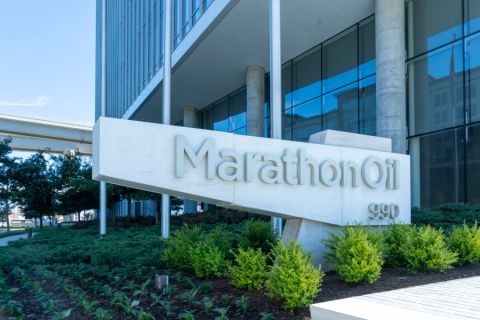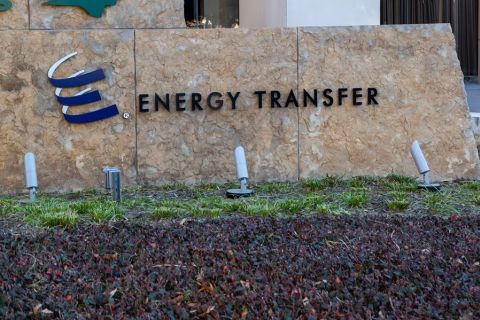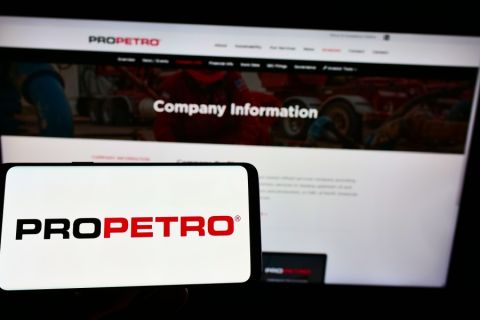These days it is not uncommon for savvy operators-and their financial backers-to form new E&P companies, grow them rapidly into robust going concerns, be acquired and plow the profits into a second start-up. It seems these entrepreneurs can't get enough of the oil patch. Who can blame them, especially when high commodity prices rule the day? That's one reason why Denver-based Medicine Bow Energy Corp. is the second start-up in recent years for Mitch Solich, chairman, president and chief executive officer. From zero at the start in January 2002, net production has risen to about 100 million cubic feet of gas equivalent per day, including Medicine Bow's stake in Four Star Oil & Gas Co., which it co-owns with joint-venture partner ChevronTexaco. At year-end 2004, a third-party reserve report indicated Medicine Bow had about 750 billion cubic feet equivalent of proved, probable and possible reserves, with about half of these proved and 65% gas. The company's 2005 drilling budget of $71 million will be deployed on these organic growth opportunities, although "we are working both acquisitions and drilling very hard," Solich says. Medicine Bow operates the bulk of its wells and typically owns at least a 50% working interest; in many cases, it owns 75% to 90%. "I can't tell you how fortunate I feel that while we started with zero in 2002 we have grown to where are today, and we have no debt," Solich says. The company was created by Solich and former team members of Shenandoah Energy, a company Solich started in 1999. Shenandoah was acquired by Questar in 2001 for $406 million after amassing 415 billion cubic feet equivalent of proved reserves, mostly in the Uinta Basin. In the current robust E&P climate, repeat business is almost a must. Medicine Bow's early seed money was provided by former individual shareholders and management team members of Shenandoah and Cody Energy, but in May 2002, serious institutional money catapulted the company forward. Credit Suisse First Boston Private Equity and EnCap Investments LP each own 26.9% of the company. Kayne Anderson Energy Fund II controls 16.3%, Liberty Energy Holdings, 10.8%, and founders and management, about 19%. Collectively, these investors have committed $210 million in private equity to the company. Although Medicine Bow has grown through acquisitions, it has arrived at the point where a significant amount of its capital is now devoted to development drilling. "We are fairly low-risk. We started with a clear mission to create value at the lower end of the risk spectrum and that has not changed," Solich says. "We have done some step-out drilling but I wouldn't classify it as wildcatting." Deals for growth Acquisitions have been a key factor in Medicine Bow's growth and will remain so. The company has closed three major acquisitions so far for an aggregate $248 million, as well as subsequently making a few, small, bolt-on deals in each core area. Solich prefers negotiated deals over marketwide bidding situations. "We're continually in the hunt," he says. Medicine Bow's line of bank credit is completely untapped at this time, which gives the company a lot of capital in the quiver. Its bankers are BNP Paribas, US Bank and Union Bank of California. Solich says a deal of up to $200 million, for either assets or a company, would be possible. And, he would like to add a fourth core area, one "liberally laced with pipelines." The company's first deal closed in March 2003 when it acquired assets in the Cotton Valley Lime play in Upshur County, East Texas, an area that remains one of the company's three core areas. That acquisition provided the company with a 2,000-acre foothold in the play, from which it continues to expand. Since the acquisition, the company has drilled 23 wells and now holds approximately 11,500 net acres. The next deal closed in June 2003 when the company acquired Ensign Oil & Gas, a private Denver independent funded by a U.K. pension fund. With Ensign, it picked up more than 600 producing wells in eight states in the Midcontinent and Rockies. After acquiring Ensign, the Medicine Bow team took about a year to evaluate the assets more fully and identify those to keep and those to sell. In 2004, it divested what it considered to be noncore properties. "That allowed us to retire our bank debt and concentrate our human capital," Solich says. "Now our people are running hard and fast, with a renewed enthusiasm. They are the key; none of this is possible without them." The firm has 55 employees and maintains offices in Gillette, Wyoming; Liberal, Kansas; and Tyler, Texas. "Our value is fairly evenly distributed between the Rockies, East Texas and the Midcontinent, but our largest core area is the Rockies. We like it a lot." Indeed, a key asset that came with Ensign was Powder River Basin acreage prospective in the Parkman, a Cretaceous, coal-bearing sandstone. "This was a project we had identified as having some potential even before we bought Ensign," says Solich. "We are deploying significant capital there to drill horizontal oil wells and we've acquired additional acreage on which to expand-we have in excess of 30,000 net acres in the play. "It's turning out to be a stellar project. We've probably only booked about a third of the locations there that we have to drill." The wells are drilled to about 7,000 feet vertically and then another 4,000 feet horizontally. Solich estimates the company could recover several hundred thousand barrels per well on primary production and another several hundred thousand through secondary recovery. The company recently filed applications to drill six more horizontals to the Parkman, according to IHS Energy. Additionally Medicine Bow is active in the Sussex oil play in the area and, in many respects, on the same acreage block as the Parkman play. In the Midcontinent, the firm focuses on the Hugoton gas field and on an oil play in Caddo County, Oklahoma. All told company-wide, Medicine Bow has several hundred booked locations and several hundred unbooked, although since Medicine Bow is private, Solich won't give specific numbers. A four-star deal By virtue of its stake in Four Star Oil & Gas, which it acquired in January 2004, Solich has now teamed twice with ChevronTexaco. Four Star's principal assets are in the San Juan Basin, the Hugoton, onshore Gulf Coast and West Texas. For history buffs, Four Star is the former Getty Oil. ChevronTexaco owns 61.4% and Medicine Bow owns 38.6%, but hopes to acquire a larger position. "At Shenandoah, we had an excellent relationship with Chevron and that led to the new relationship with Four Star," Solich says. "We have been really pleased with the Four Star investment and the synergies with ChevronTexaco that we anticipated would occur are beginning to unfold. "What really excites me, and I'm grateful for, is that we've identified significant running room in our three core areas-the Rocky Mountains, Midcontinent and East Texas-and most of that running room is not booked yet." Are there any comparisons he can cite between starting Shenandoah and Medicine Bow? Solich laughs and says, "No. It's all hard work." There are big operational differences, however. Shenandoah drilled 219 wells in 19 months, almost all in the same play in Utah. Medicine Bow has not drilled nearly as many wells and it is active in several different states so its opportunity set is more diverse. "It's always hard to do a good deal and easy to do a bad one," Solich says. "As long as a person doesn't believe his own press but does surround himself with good people, from the pumper in the field all the way to the office, and has strong equity and debt providers, it's a great adventure. "The battle plan that was successful in the past may not be so in the future, so you must keep an open mind and adapt. I told myself this when we started Medicine Bow and I continue to tell myself that every day."
Recommended Reading
Exxon Mobil, Chevron See Profits Fall in 1Q Earnings
2024-04-26 - Chevron and Exxon Mobil are feeling the pinch of weak energy prices, particularly natural gas, and fuels margins that have cooled in the last year.
Marathon Oil Declares 1Q Dividend
2024-04-26 - Marathon Oil’s first quarter 2024 dividend is payable on June 10.
Talos Energy Expands Leadership Team After $1.29B QuarterNorth Deal
2024-04-25 - Talos Energy President and CEO Tim Duncan said the company has expanded its leadership team as the company integrates its QuarterNorth Energy acquisition.
Energy Transfer Ups Quarterly Cash Distribution
2024-04-25 - Energy Transfer will increase its dividend by about 3%.
ProPetro Ups Share Repurchases by $100MM
2024-04-25 - ProPetro Holding Corp. is increasing its share repurchase program to a total of $200 million of common shares.




